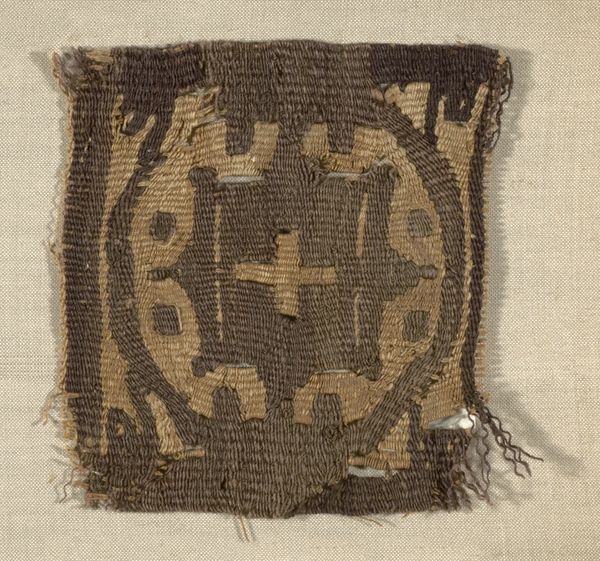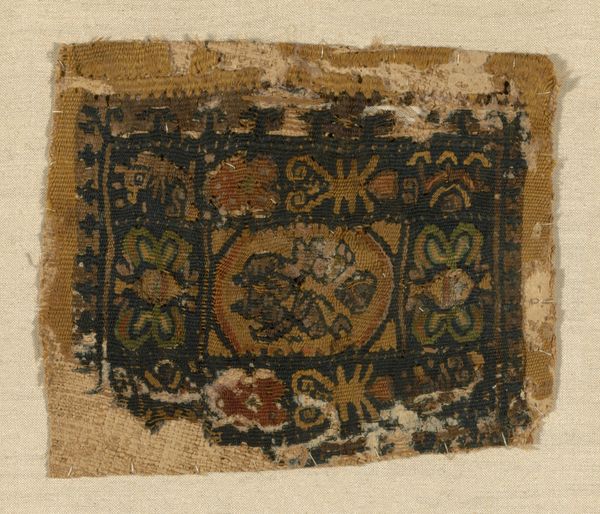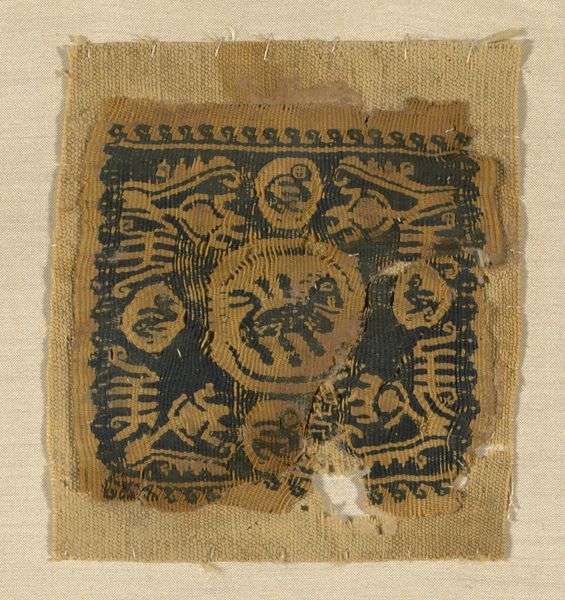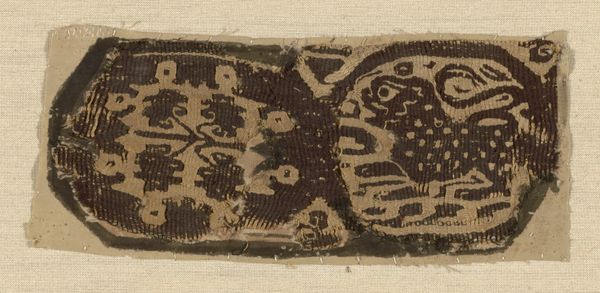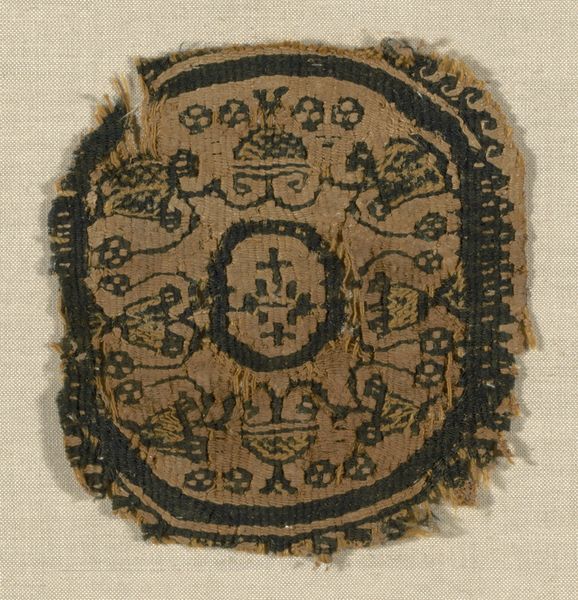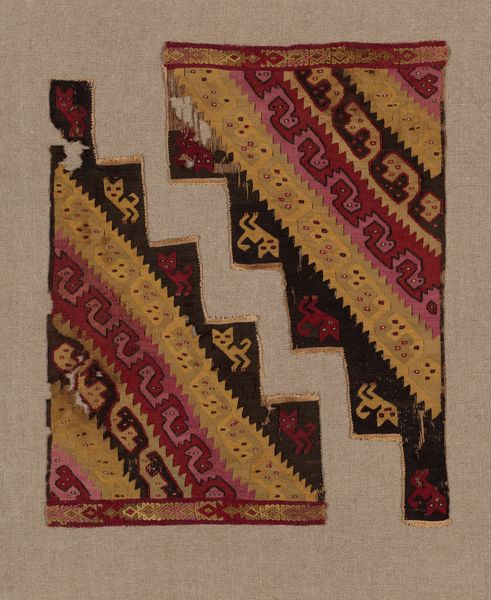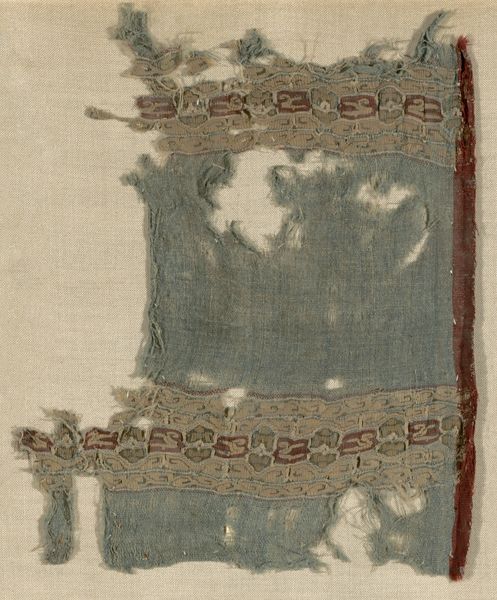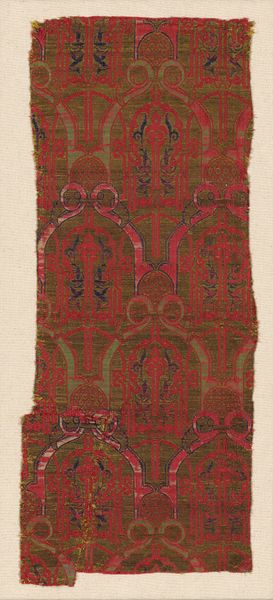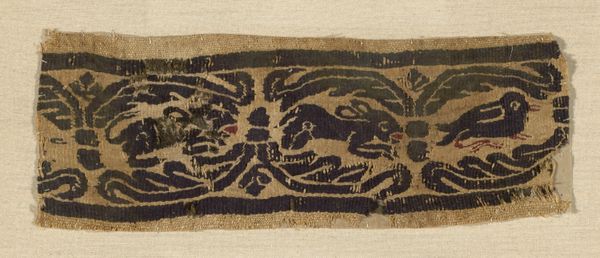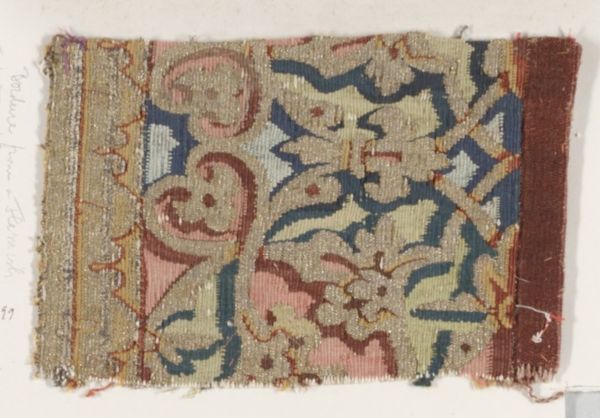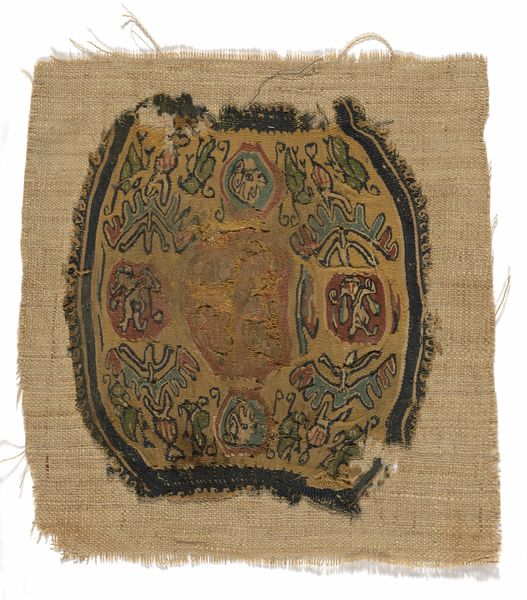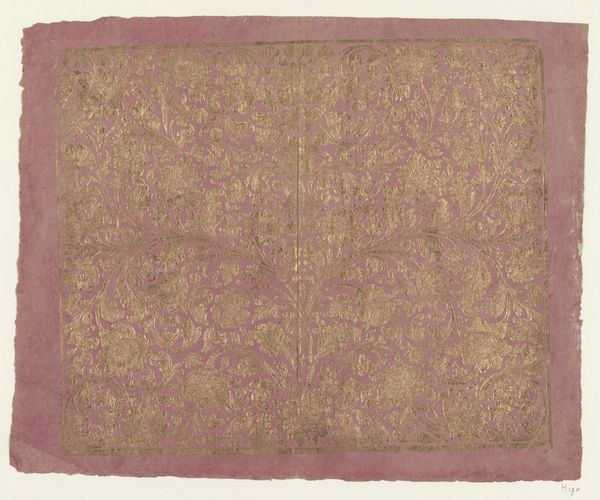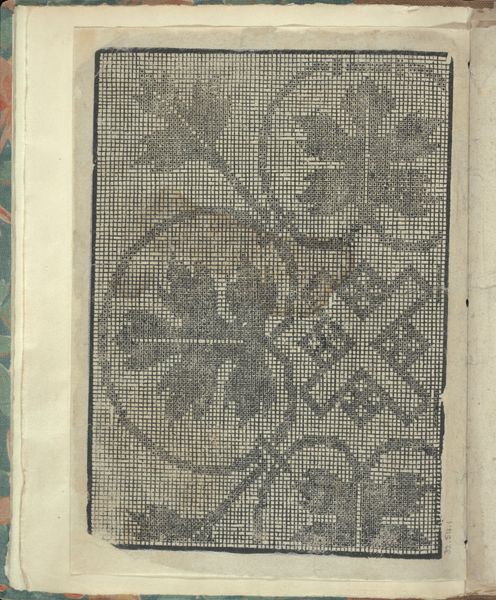
Fragment Roman period (30 B.C.–641 A.D.)/Arab period (641–969), 6th/7th century
0:00
0:00
weaving, textile
#
medieval
#
pattern
#
weaving
#
textile
#
egypt
#
geometric
#
islamic-art
#
texture
#
imprinted textile
#
layered pattern
Dimensions: 7.6 × 6.4 cm (3 × 2 1/2 in.)
Copyright: Public Domain
This is a Coptic fragment, now at the Art Institute of Chicago, adorned with symbols that bridge pagan and Christian worlds. Here we see the cross, a clear emblem of Christianity, juxtaposed with stylized floral motifs, each encased in a circular frame. These blossoms might initially recall ancient sun symbols. Consider the rosette, ubiquitous in antiquity, from Mesopotamian monuments to Minoan pottery. Over time, these symbols, initially pagan, were re-coded, assimilated into the visual language of Christianity. Even today, the emotional power of these forms persists, engaging viewers on a deep, subconscious level. The floral patterns and the cross, both resonating with notions of rebirth and spiritual transcendence, evoke intense emotional states. The recurring presence and adaptation of such motifs reveal the non-linear progression of symbols, how they resurface, evolve, and take on new meanings through the ages.
Comments
No comments
Be the first to comment and join the conversation on the ultimate creative platform.
